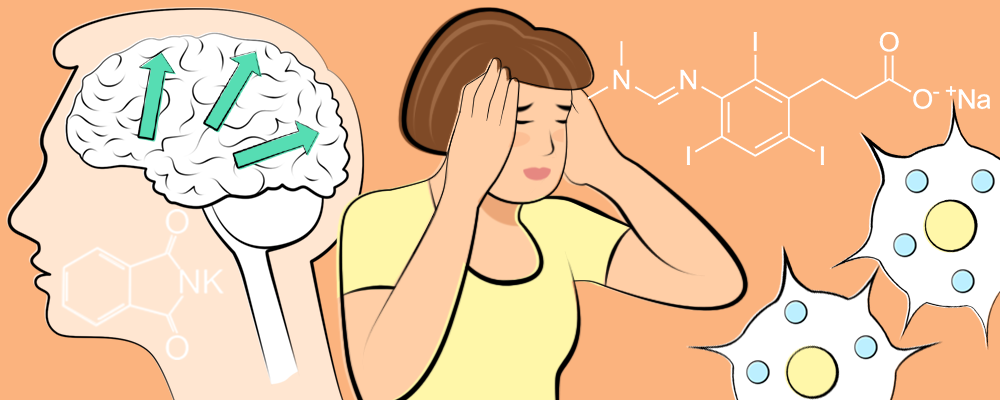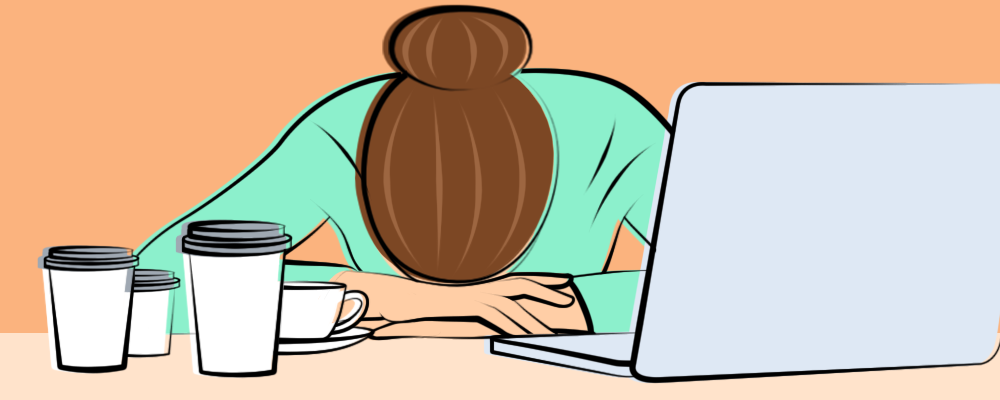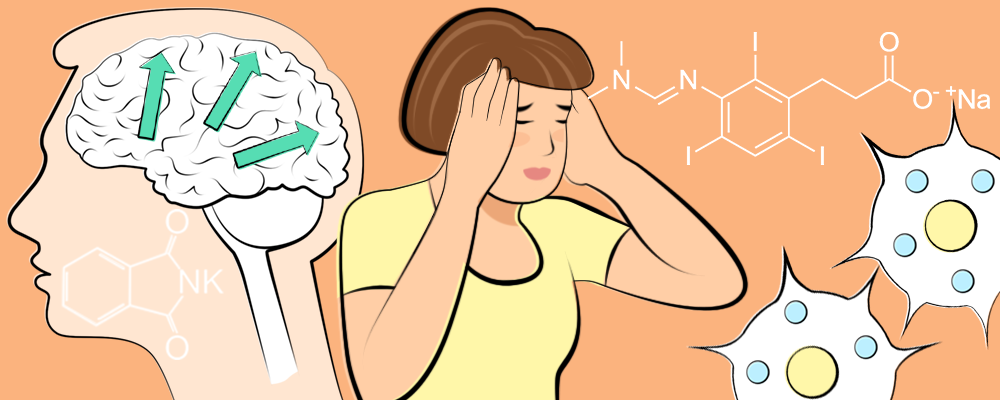Until the 20th century it was a mystery what caused migraine and what happened in the body during an attack. However, in recent years scientists have discovered many of the mechanisms that are involved when migraine attacks start and develop. This article will describe the most important of these mechanisms.
Picturing a migraine attack
The brain works through many extremely complicated biochemical and electrical mechanisms, many of which are not even completely understood by science – so it is no surprise that a description of what happens in the brain during a migraine attack is complicated! This article will try to make the process as clear as understandable as possible, even if you do not know a lot about cells and chemistry.
To start off, it can be helpful to use a mental picture that illustrates what is going on when migraine attacks are triggered: imagine a large troupe of gymnasts doing a dance routine to music, on a slick hardwood floor. The dancers are listening to music for their cues of when to do which dance move.
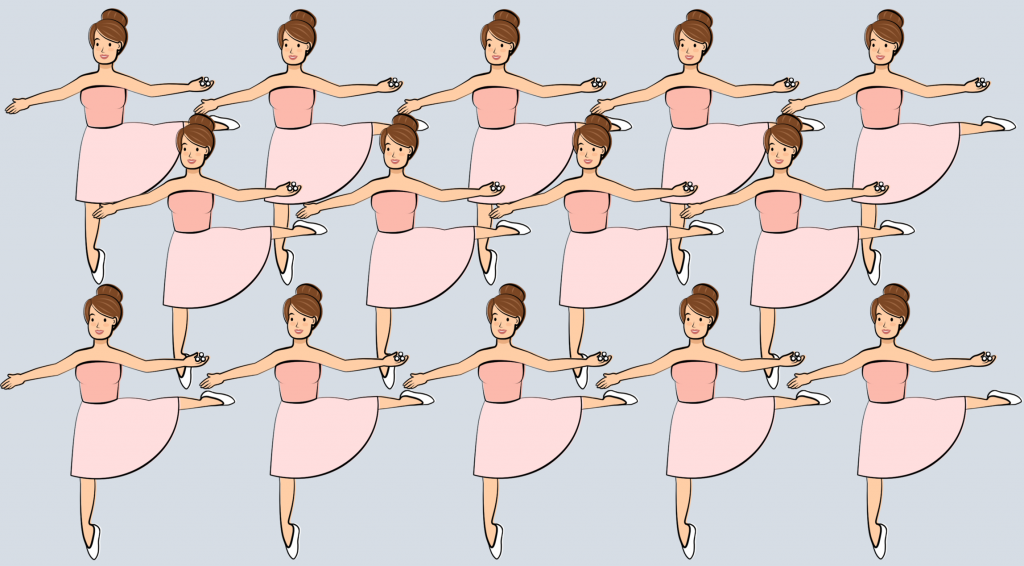
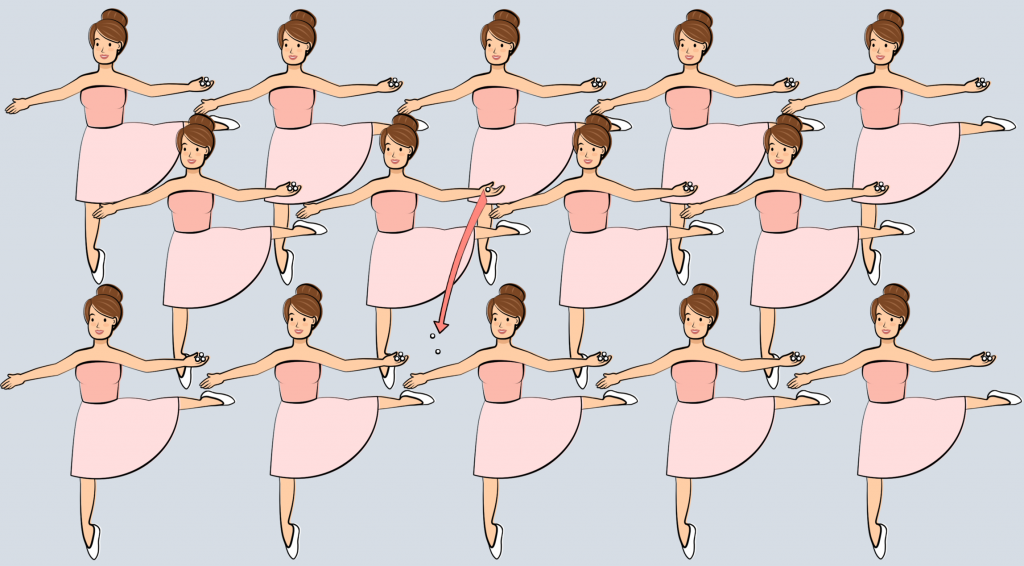
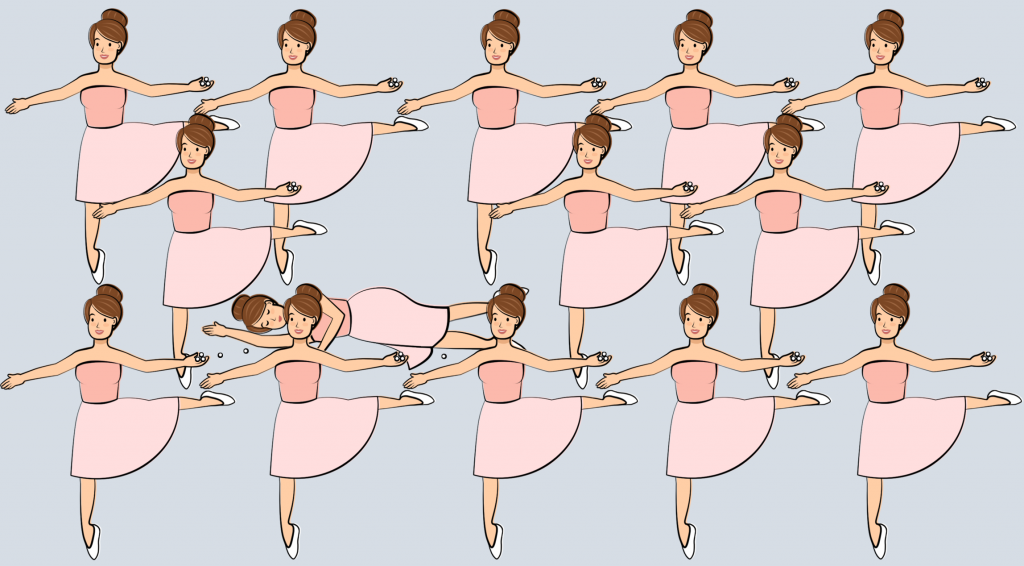
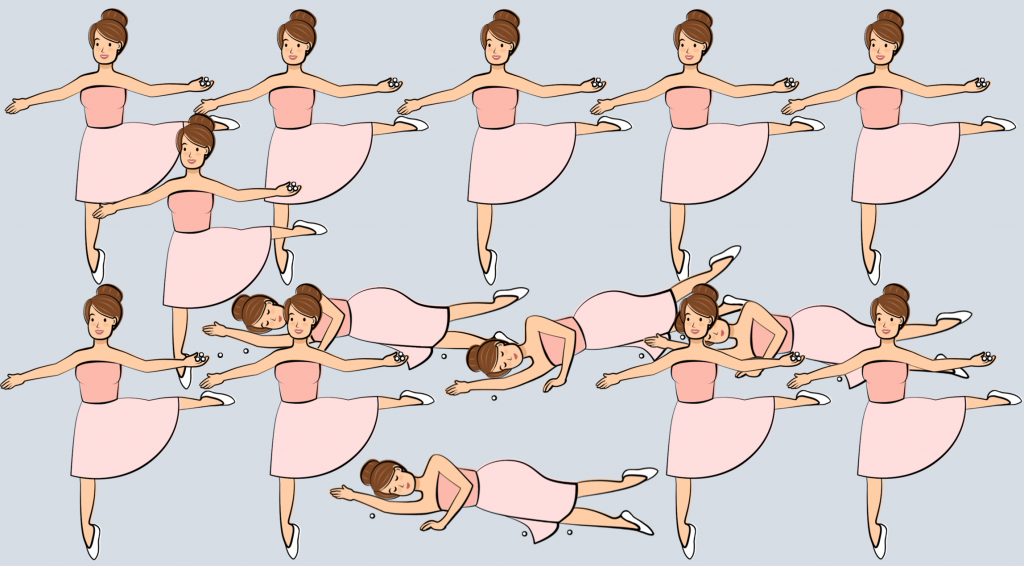
This wave of falling dancers is of course a bit silly, but the process has some similarity to the kind of chain reaction that takes place in the brain when a migraine attack is triggered, as we will see when we now dive into the actual biology of a migraine attack.
The brain before a migraine attack
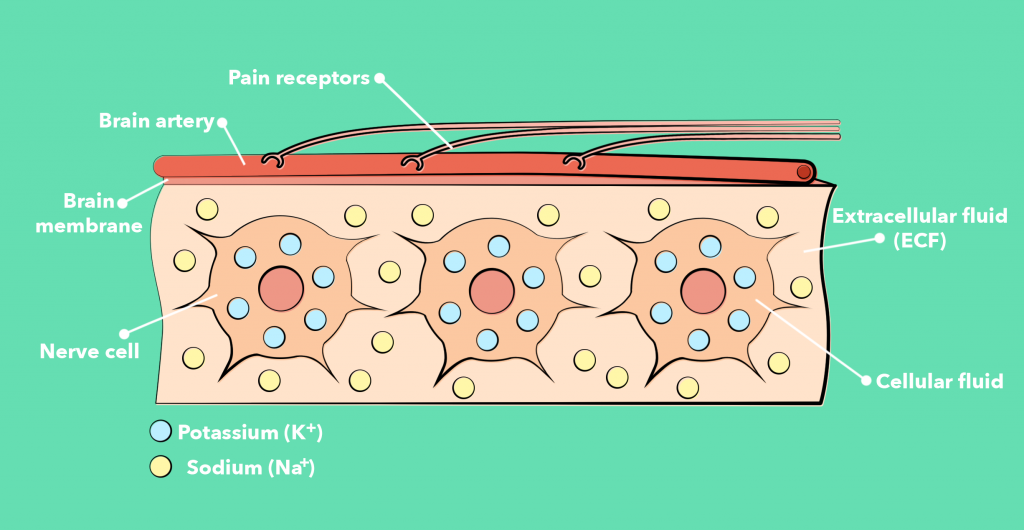
The entire brain with all its neurons and ECF is covered by a membrane (a bit like plastic wrap covering a head of cabbage). Running on the outside of this membrane are the arteries that supply the brain with oxygen and blood sugar. The nerve cells in the brain cannot feel pain, but the arteries have pain-sensing nerve endings in them, so-called pain receptors.
In the normal case illustrated in the picture above, the concentration of K+ is very large inside the nerve cells, but very low outside in the ECF. For Na+ it is the other way around.
When a nerve cell sends a signal (also known as “firing”), some of the K+ inside leaks out of the cell into the ECF, and some of the Na+ outside leaks into the cell. In our dancer example, this is similar to how the dancer from time to time drops a marble on the floor.
The normal inside/outside concentrations are kept stable by microscopic Na+/K+ “pumps” in the nerve cell’s walls. These pumps are all the time pumping K+ out of the ECF and into the cells, and Na+ in the other direction. In our dancefloor example, these pumps are like the dancer continually picking up the marbles that she drops.
A migraine attack is triggered
There is a lot of evidence that migraine attacks are triggered when the concentration of K+ in the ECF becomes too high. This corresponds to the situation where the dancer has dropped so many marbles around her feet that she ends up slipping on one of them. This increase in K+ in the ECF can happen for a number of reasons:
- If the Na+/K+-pumps are not being supplied with enough oxygen and/or blood sugar, K+ cannot be pumped out of the ECF fast enough and the concentration of K+ in the ECF will increase . This can happen if the arteries supplying this part of the brain are very contracted so that too little blood flow is coming through, starving the Na+/K+-pumps of the oxygen and blood sugar that is normally being delivered in sufficient amounts by the blood. If it is too long since you’ve eaten a meal, your blood sugar may also be so low that the Na+/K+-pumps are not getting the energy they need to remove K+ from the ECF at a fast enough rate.
- If the nerve cells have been firing at a very high frequency for a very long time, K+ in the ECF will increase (remember that some K+ flows out into the ECF every time the nerve cell sends a signal). This can happen when you have been very stressed for a long time or have not had enough sleep.
- If too little K+ is being removed by the blood flow that normally helps “sweep up” some of the excess K+ in the ECF. This happens if the blood flow to that part of the brain is insufficient.
The picture below shows the situation where a lot of K+ has leaked out of a nerve cell, so that the concentration of K+ in the ECF around that cell has become too high:
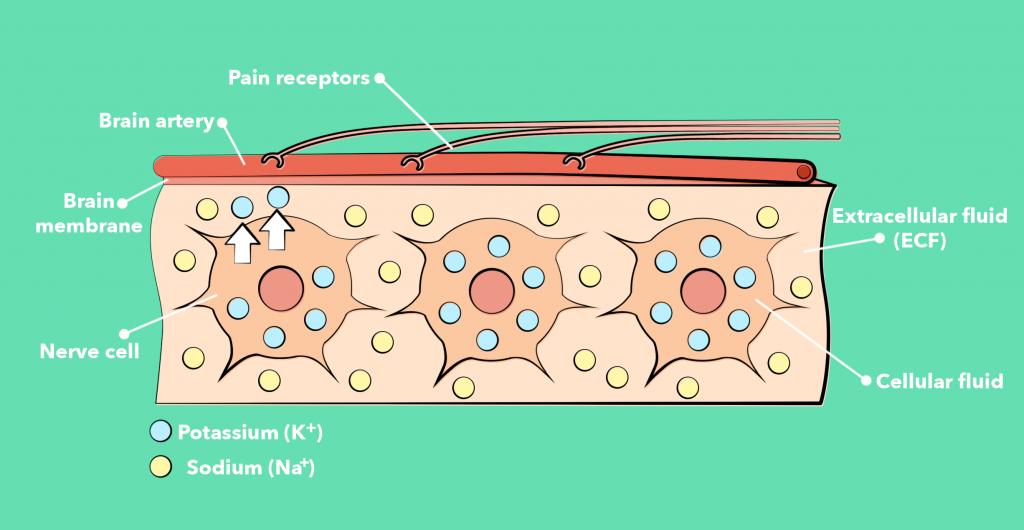
A chain reaction begins
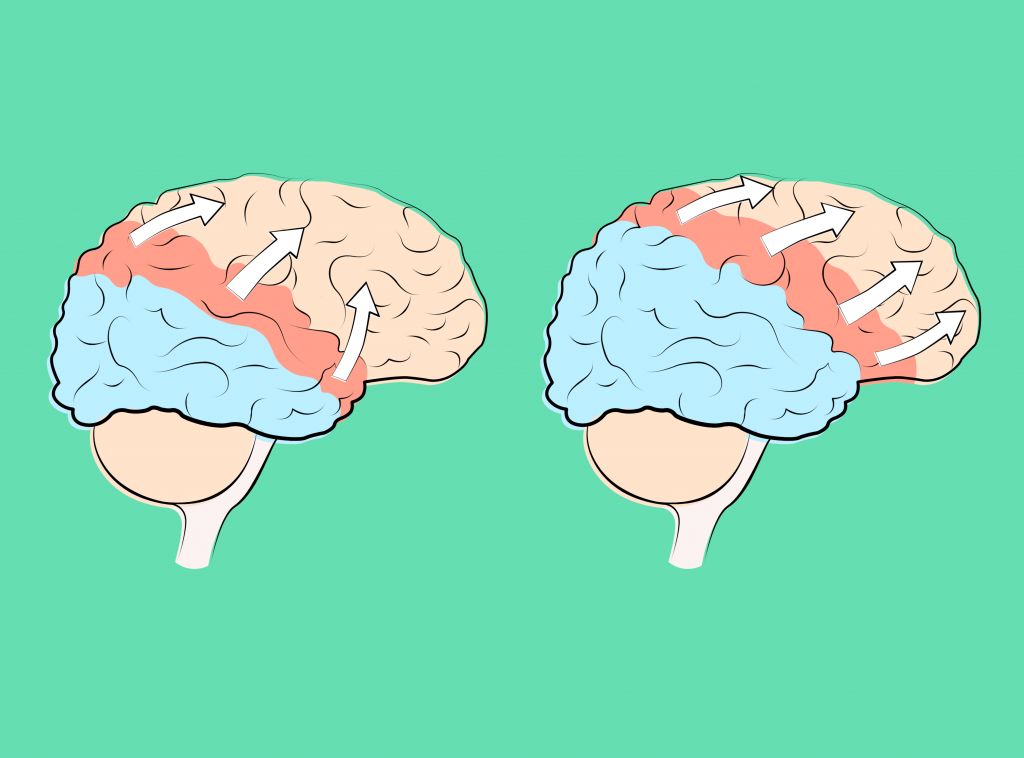
When the CSD wave arrives at a nerve cell, its normal Na+ and K+ concentration differences break down, which again makes CSD spread further.
The next step of this vicious cycle happens, when enough K+ has entered the ECF around a nerve cell. The excess K+ acts as a key which unlocks a specific type of channel in the wall of the nerve cell:
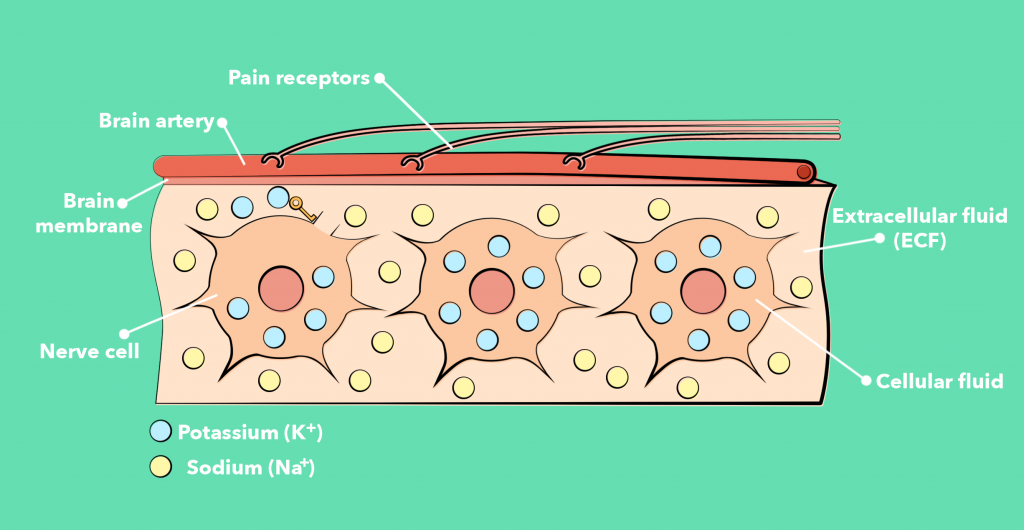
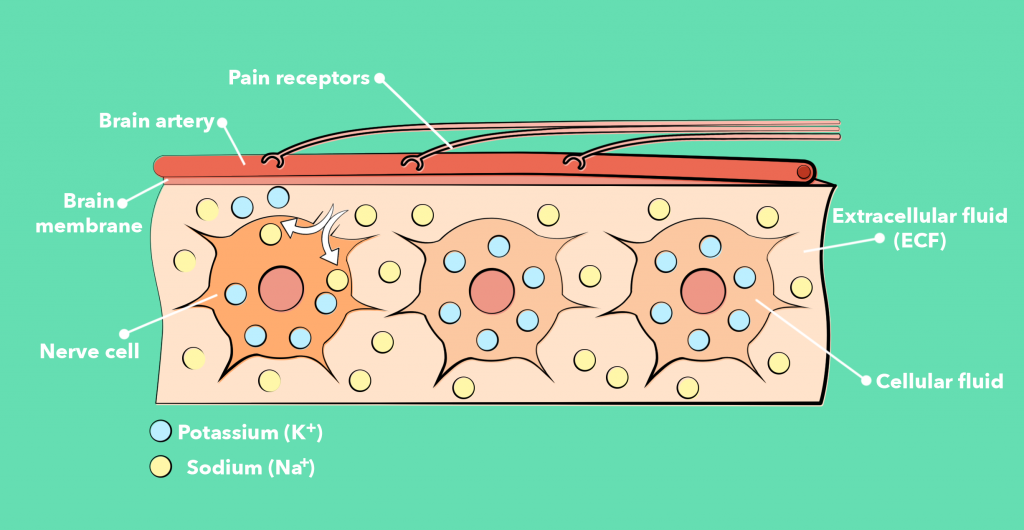
When this large number of Na+ molecules enter the molecule it becomes depolarized (illustrated in the figure above by the color change of the nerve cell), meaning that it loses its normal “battery charge” and cannot work properly again before it has been recharged by its Na+/K+-pumps.
Importantly, the opening of the NMDA channels also allows even more K+ to escape into the ECF (in the example this corresponds to the dancer dropping all her marbles on the floor when she falls):
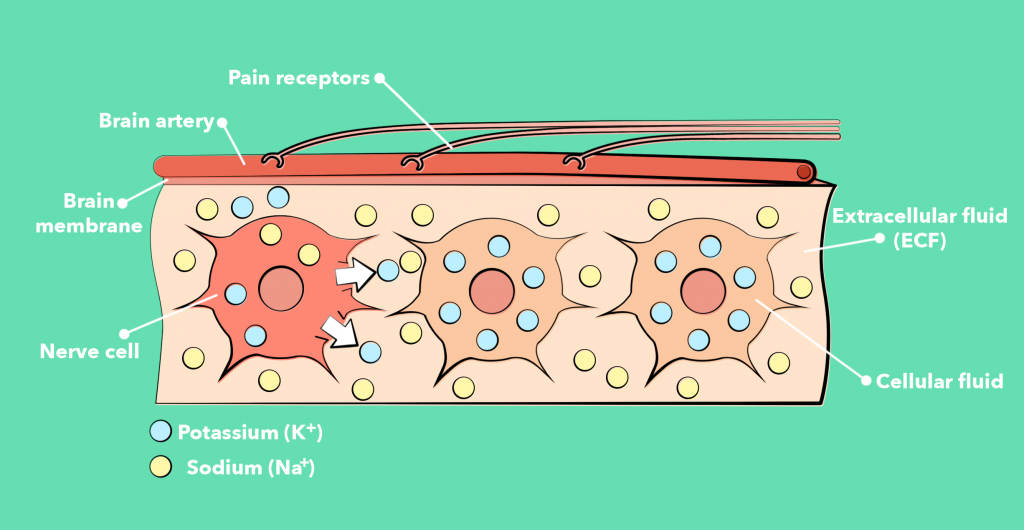
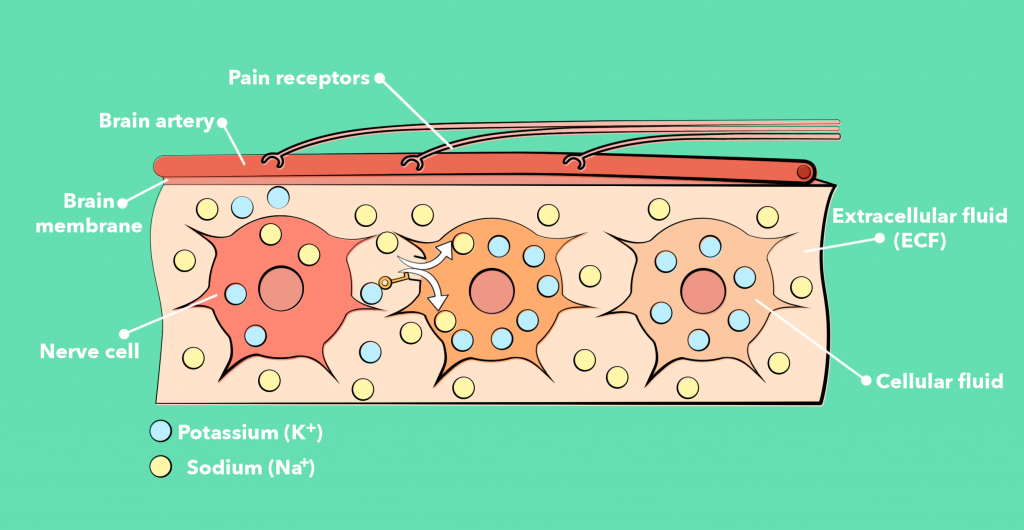
This chain reaction spreads from nerve cell to nerve cell, opening NMDA channels, strongly depolarizing each cell in turn and overturning the normal concentrations of Na+ and K+. It is this late part of the CSD chain reaction which in some migraine patients is experienced as a migraine “aura”, because of the way that CSD disrupts the cells’ normal function.
The headache begins
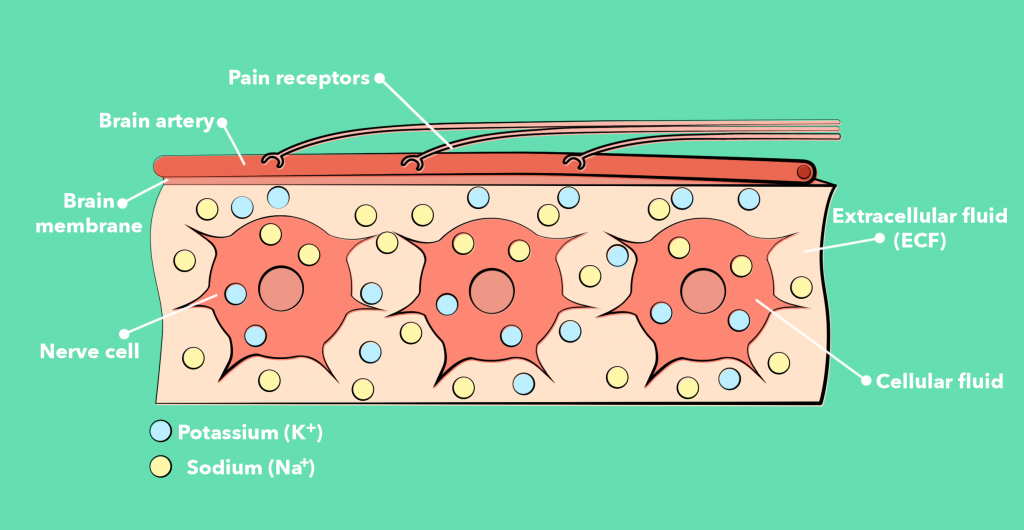
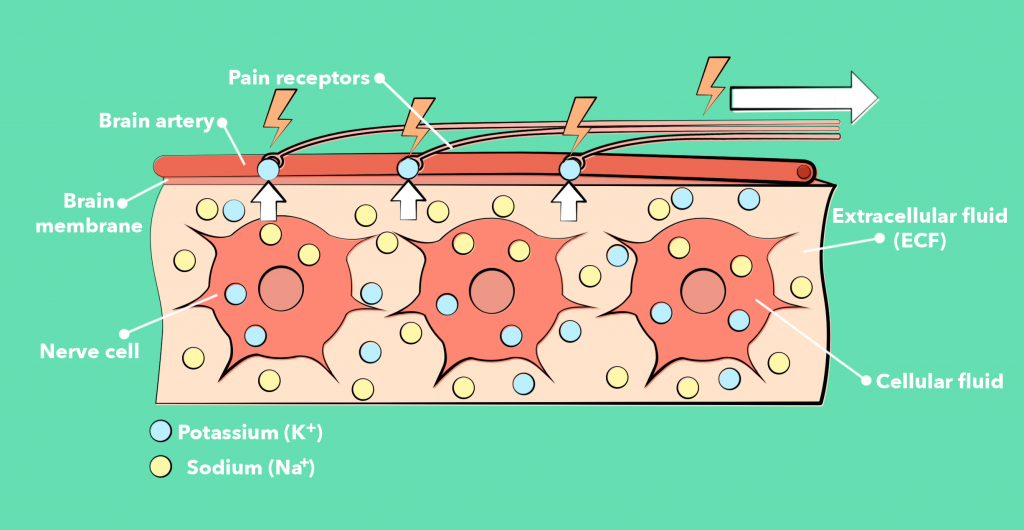
As illustrated in the figure above, the pain receptors react to the arrival of the pain-producing molecules by sending out pain signals. These signals travel through the nerves down to the brain stem and back up to the part of the brain that is responsible for registering pain – at which point the headache phase of the migraine attack starts. At some of the “relay stations” on this path of the pain signal, other nerve cells are activated that cause the non-pain migraine symptoms, such as nausea and light/sound sensitivity.
Sensitization
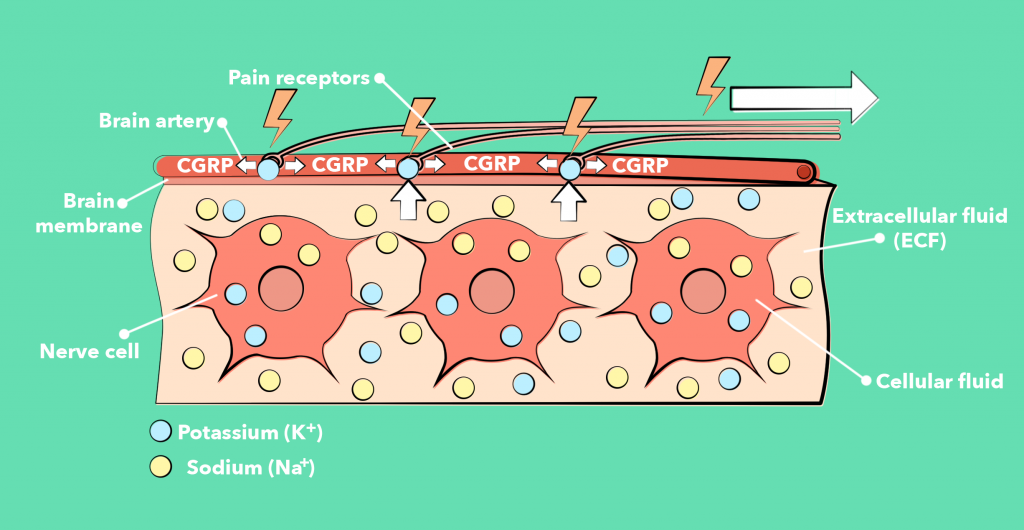
CGRP causes inflammation, which further worsens and prolongs the attack. At this point, so-called sensitization may occur, meaning that the pain receptors and the brain become even more sensitive, which makes the pain and other migraine symptoms even worse.
Healing begins
As the attack develops, the brain is at the same time working on normalizing itself by removing pain-causing molecules and trying to re-balance the Na+/K+-concentrations. In our dancer example, we can picture the dancers slowly getting to their feet and start picking up all the marbles they dropped.
This normalizing work is done most effectively while you are sleeping, which is why sleep is one of the best remedies for a migraine attack. Unfortunately, it may still take a long time for the attack’s chain reactions to burn themselves out, and for the body to recover.
Summing up
Migraine attacks are triggered when brain cells lose their normal inside/outside balance of potassium and sodium, for example by being starved of oxygen. This leads to a chain reaction in the brain called Cortical Spreading Depression (CSD) that causes even more brain cells to destabilize and release pain-triggering molecules.
When enough brain cells have been hit by the CSD wave, so many of the pain-triggering molecules build up that they spread out through the brain’s membranes, after a while reaching the pain receptors on the outside surface of the brain. This causes the migraine headache.
Because the breakdown in the brain’s normal balance is so drastic and so many pain-triggers are released, it can takes days to restore the brain to its normal state.
